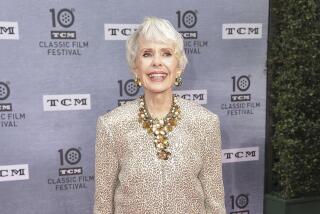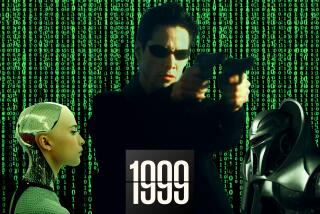Meet the ‘Hidden Figures’ mathematician who helped send Americans into space
Before they were machines based on silicon, “computers” were actually women — though their colleagues would often refer to them as “girls.”
The film “Hidden Figures,” which opened to wide release Friday and picked up two Golden Globe nominations, tells the story of three black computers who dealt with segregation in the Jim Crow South even as they helped NASA hold its own in the Cold War-fueled space race.
Inspired by a book on the lives of these women, the movie centers around Katherine G. Johnson, a NASA mathematician from the racially segregated West Computing group at NASA’s Langley Research Center in Virginia. Johnson (portrayed by Taraji P. Henson) played key roles in the flights of astronauts Alan Shepard, the first American in space, and John Glenn, the first American to orbit the Earth.
Johnson, now 98, received the Presidential Medal of Freedom in 2015. She answered questions from The Times on her life, the film and her love of numbers.
What was it like to work alongside white colleagues while still living in a segregated community in Virginia?
We always did what we had to do.
When you first started as a computer, did you ever think you would help get the first American, John Glenn, into orbit?
No, I was just excited to have challenging work to do and smart people to work with.
At the time, did you think about the fact that you, Dorothy Vaughan and the other West Computing women were pushing the boundaries of what it meant to be a mathematician, a scientist or an engineer?
We did what we were asked to do to the best of our ability.
What was it that drew you to mathematics?
Numbers.
What were your favorite challenges to work on?
Solving the most difficult problems.
What was it like to work with NASA engineers, particularly in these high-pressure situations?
Exciting. I liked working with smart people.
Did you ever have to go toe-to-toe with them over the numbers?
After a while, they learned to respect my answers because they were always correct.
What did you think about the movie?
It was well-done. The three leading ladies did an excellent job portraying us.
In the movie, your character is forced to run back and forth to West Computing to use the bathroom. But according to the book, you actually ignored the prohibitions and used the white women’s bathroom anyway — and it sounds like no one stopped you. Is there a lesson to be learned in the way you dealt with that particular barrier?
What were we supposed to do? We learned to pick our battles for the greater good.
You did more than calculations — in the film, you created “new” math to go from an elliptical to a parabolic orbit. Did you think of it as cutting-edge math at the time?
It was pure math. It was the solution to the problem. That was what we did. That’s why they needed mathematicians.
There’s this lovely part in the movie in which your character turns to “old” math — Euler’s method — to figure out how to get John Glenn back down from orbit. Did that really happen?
It seemed logical to me. I could see in my mind what I needed and sort of worked backwards.
Did you ever have to fight to have authorship or co-authorship of a report?
The movie and book were pretty accurate. Women (“girls,” aka mathematicians) did not have their names included as authors on technical paper in the early days.
Did you meet John Glenn and the other Mercury Seven astronauts? Was Glenn as charming as he seemed in the movie?
We did not see them much. I understand they were very friendly and approachable in their communities in Hampton (grocery stores, church, ballgames and the like).
At the time, did you know that John Glenn asked for “the girl” (which would be you) to check the numbers before he took his landmark flight into space? Did it heighten the stakes for you?
I knew they asked me to check the numbers. That was what I did. They knew my record for accuracy. I knew and had confidence in my math, so I did it. I always did my best.
In the book, you heap loads of praise on Dorothy Vaughan and your fellow colleagues. Are there any other unsung heroes of the space race who you feel could be featured in their own movie?
Dr. Christine M. Darden is the first person that comes to mind. We all provided valuable input to the process. There were many remarkable women there.
Why do you think that relatively few people knew about the remarkable work that you, Dorothy Vaughan, Mary Jackson and others did for the space program until recently?
The work was “secret” and the public knew only that which was reported from NASA.
Do you have any thoughts on how to get more women and people of color into math, science and engineering?
Go see “Hidden Figures,” and take a young person! It will give a more positive outlook on what is possible if you work hard, do your best and are prepared.
Do you have any advice for young women and people of color today who want to pursue a STEM career?
Just do it. Take all the courses in your curriculum. Do the research. Ask questions. Find someone doing what you are interested in! Be curious!
This interview was edited for length and clarity.
Follow @aminawrite on Twitter for more science news and “like” Los Angeles Times Science & Health on Facebook.
MORE IN SCIENCE
‘Hidden Figures’ may feature NASA’s history, but it resonates in the present
How much rain did we get? Ask the iRain app, created at UC Irvine
Science explains why humans may never see the world through a hummingbird’s eyes







